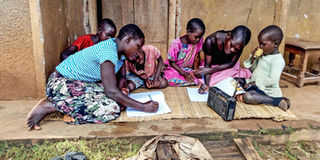Media can’t serve all 15 million learners

Following the outbreak of Covid-19 in Uganda, the President on March 20 ordered for the closure of all schools and other institutions. As a result, nearly 15 million students were sent home.
Since then, the Ministry of Education has devised plans of how students can study at home during the lockdown. Plans have been hatched by the Ministry of Health, which include online learning using TV and radio.
Besides, many schools introduced WhatsApp lines where teachers of different subjects could teach, send notes, and questions to students. Also teaching/lessons were introduced at different times for specific classes. Newspapers started producing educational materials for different classes on specific days.
All these were meant to be channels of reaching out to the 15 million learners affected by the Covid-9 lockdown.
According to National Housing and Population Census 2016/2017, only 5.2 per cent and 17.4 per cent of Ugandan households own radios and TVs, respectively.
Besides, 90 per cent of students cannot access computers at home and 82 per cent cannot access the Internet and, therefore, cannot access digital materials that broacast on TVs.
Yet TV and radio lessons are teachers-centered and do not give room for student participation. The approach cannot accommodate slow learners because of the speed of teaching. Students with disability are not catered for under this arrangement thus, leaving many of them behind.
Parents literacy level is at 70 per cent hence few parents can guide learners on education materials that the government is distributing during the lockdown. Since we are not sure of when the schools will re-open, government and other stakeholders should create feedback platforms for learners, especially those in the rural areas through school administration.
And children with disability too should be factored in to enable them to continue with studies.
Besides, home-learning materials should be sent to heads of schools and not to local councils.
Heads of schools have direct contact with their students through parents profiles than local councils. Besides, schools can make follow ups of learning materials sent to communities through cluster approach to avoid congestion.




